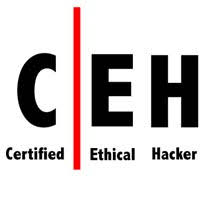

EC-Council’s CEH v10 course is the world’s most advanced ethical hacking course encompassing 18 state-of-the-art modules containing everything you need to know to improve the security posture of your organisation.
CEH v10 covers over 270 different attack technologies, examining many different approaches taken by attackers and allowing you to truly embrace the hacker mind-set.
Immerse yourself in over 140 expertly designed lab exercises which mimic real time scenarios and use over 2200 available hacking tools to hone your skills and grow your Ethical Hacking expertise.
Course Details
Who is it for?
The Certified Ethical Hacking training course will significantly benefit security officers, auditors, security professionals, site administrators, and anyone who is concerned about the integrity of their network infrastructure.
The Certified Ethical Hacker (CEH) program is the core of the most desired information security training
system any information security professional will ever want to be in. The CEH, is the first part of a 3 part
EC-Council Information Security Track which helps you master hacking technologies. You will become a
hacker, but an ethical one!
As the security mindset in any organization must not be limited to the silos of a certain vendor,
technologies or pieces of equipment,
This course was designed to provide you with the tools and techniques used by hackers and information
security professionals alike to break into an organization. As we put it, “To beat a hacker, you need to
think like a hacker”. This course will immerse you into the Hacker Mindset so that you will be able to
defend against future attacks. It puts you in the driver’s seat of a hands-on environment with a systematic
ethical hacking process.
Here, you will be exposed to an entirely different way of achieving optimal information security posture
in their organization; by hacking it! You will scan, test, hack and secure your own systems. You will be
taught the Five Phases of Ethical Hacking, and thought how you can approach your test target and succeed
at breaking in every time! The five phases include Reconnaissance, Gaining Access, Enumeration,
Maintaining Access and Covering your tracks.
The tools and techniques in each of these five phases are provided in detail in an encyclopaedic approach
to help you identify when an attack has been used against your own targets.
Why is this training called the Certified Ethical Hacker Course? We teach the same techniques as the bad
guys, you can assess the security posture of an organization with the same approach these malicious
hackers use, identify weaknesses and fix the problems before they are identified by the enemy, causing
what could potentially be a catastrophic damage to your respective organization.
Throughout the CEH course, you will be immersed in a hacker’s mindset, evaluating not just logical, but
physical security.
CEHv9 consists of 18 core modules designed to facilitate a comprehensive ethical hacking and
penetration testing training.
1 Introduction to Ethical Hacking
Information Security Overview
Information Security Threats and Attack Vectors
Hacking Concepts, Types and Phases
Ethical Hacking Concepts and Scope
Information Security Controls
Physical Security
Incident Management
What is Vulnerability assessment?
Penetration Testing
Information Security Laws and Standards
2 Footprinting and Reconnaissance
Footprinting Concepts
Footprinting Methodology
Footprinting Tools
Footprinting Countermeasures
Footprinting Penetration Testing
3 Scanning Networks
Overview of Network Scanning
CEH Scanning Methodology
4 Enumeration
Enumeration Concepts
NetBIOS Enumeration
SNMP Enumeration
LDAP Enumeration
NTP Enumeration
SMTP Enumeration
Enumeration Countermeasures
SMB Enumeration Countermeasures
Enumeration Penetration Testing
5 System Hacking
Evaluating Information for System Hacking
System Hacking Goals
CEH Hacking Methodology (CHM)
CEH System Hacking Steps
Hiding Files
Covering Tracks
Penetration Testing
6 Malware Threats
Introduction to Malware
Trojan Concepts
Types of Trojans
Virus and Worms Concepts
Malware Reverse Engineering
Countermeasures
Anti-Malware Software
Penetration Testing
7 Sniffing
Sniffing Concepts
MAC Attacks
DHCP Attacks
ARP Poisoning
Spoofing Attack
DNS Poisoning
Sniffing Tools
Sniffing Tool: Wireshark
Packet Sniffing Tool: Capsa Network Analyser
Network Packet Analyser
Countermeasures Sniffing Detection and
Penetration Testing
8 Social Engineering
Social Engineering Concepts
Social Engineering Techniques
Impersonation on Social Networking Sites
Identity Theft
9 Denial of Service
DoS/DDos Concepts
DoS/DDoS Attack Techniques
Botnets
DDoS Case Study
Dos/DDos Attack Tools
Counter-Measures
Dos/DDos Protection Tools
DoS/DDos Attack Penetration Testing
10 Session Hijacking
Session Hijacking Concepts
Application Level Session Hijacking
Network Level Session Hijacking
Session Hijacking Tools
Countermeasures and Penetration Testing
11 Hacking Webservers
Webserver Concepts
Webserver Attacks
Attack Methodology
Webserver Attack Tools
Countermeasures, Security Tool and Penetration
Testing
Webserver Security Tools
12 Hacking Web Applications
Web Application Concepts
Web Application Threats
Web Application Hacking Methodology
Web Application Hacking Tools
Countermeasures, Security Tool and Penetration
Testing
Web Application Perpetration Testing Framework
13 SQL Injection
SQL Injection Concepts
Types of SQL Injection
SQL Injection Methodology
SQL Injection Tools
Evasion Techniques
Countermeasures
14 Hacking Wireless Networks
Wireless Concepts
Wireless Encryption
Wireless Threats
Wireless Hacking Methodology
Wireless Hacking Tools
Bluetooth Hacking
Counter Measures and Wi-Fi Penetration Testing
Wireless Security Tools
15 Hacking Mobile Platforms
Mobile Platform Attack Vectors
Hacking Android OS
Hacking iOS
Hacking Windows Phone
Hacking Blackberry
Mobile Device Management (MDM)
Mobile Security Guidelines, Tools And Penetration Testing
16 Evading IDS, Firewalls and Honeypots
IDS, Firewalls and honeypot Concepts
IDS, Firewalls and honeypot Systems
Evading IDS/Firewalls
IDS/Firewall Evading Tools
Detecting Honeypots
IDS/Firewall Evasion Countermeasures and Penetration
Testing
17 Cloud Computing
Introduction to Cloud Computing
Cloud Computing Threats
Cloud Computing Attacks
Cloud Security Tools and Penetration Testing
18 Cryptography
Market Survey 2014: The Year of Encryption
Case Study: Heartbleed
Case Study: Poodlebleed
Cryptography Concepts
Encryption Algorithms
Cryptography Tools
Public Key Infrastructure (PKI)
Email Encryption
Disk Encryption
Cryptography Attacks
Cryptanalysis Tools
Details
Duration: The CEH course runs over 5 Days (9:00 AM – 5:00 PM), including a final exam.
Course Cost: £2082.5 exc VAT
Exam Information:
Number of Questions: 125
Test Duration: 4 Hours
Test Format: Multiple Choice
For further details please contact QG Management Standards on 01228 631681 or email cyber@qgbiz.co.uk
Location;
Glasgow Training Venue, 8 Elmbank Gardens Glasgow G2 4NQ + Google Map
Dates;
No Course Dates Found
